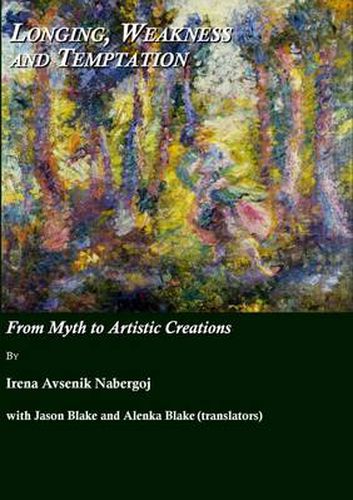Readings Newsletter
Become a Readings Member to make your shopping experience even easier.
Sign in or sign up for free!
You’re not far away from qualifying for FREE standard shipping within Australia
You’ve qualified for FREE standard shipping within Australia
The cart is loading…






The themes of longing, weakness and temptation are relevant to every human and are interwoven with all fundamental ideals and values of the created, rational being. Temptation is all the more dramatic, the broader the perspective of recognition, the power of human longing and the sense of the difference between good and evil. This book is a summary of a study which compares and contrasts Slovenian and European literary works created under the influence of biblical source texts (Adam and Eve, Joseph from Egypt, Samson and Dalilah, etc.) and the works of other known and unknown origins (Homer’s Iliad, Goethe’s Faust, various versions of the myth of the Fair Vida, etc.). The ascribing of a text to a genre provides the interpreter of the text with a key intertextual framework and with a system of references to other books, other texts, other literary statements. The intertextual approach is obviously appropriate to the study of contents, symbols and forms of literary works. It shows how the source text continues to speak through the new work and how the new work forces new meanings from the source text. Later writers use important themes with a historical sense, when aiming toward a better understanding of authenticity of human existence.
$9.00 standard shipping within Australia
FREE standard shipping within Australia for orders over $100.00
Express & International shipping calculated at checkout
The themes of longing, weakness and temptation are relevant to every human and are interwoven with all fundamental ideals and values of the created, rational being. Temptation is all the more dramatic, the broader the perspective of recognition, the power of human longing and the sense of the difference between good and evil. This book is a summary of a study which compares and contrasts Slovenian and European literary works created under the influence of biblical source texts (Adam and Eve, Joseph from Egypt, Samson and Dalilah, etc.) and the works of other known and unknown origins (Homer’s Iliad, Goethe’s Faust, various versions of the myth of the Fair Vida, etc.). The ascribing of a text to a genre provides the interpreter of the text with a key intertextual framework and with a system of references to other books, other texts, other literary statements. The intertextual approach is obviously appropriate to the study of contents, symbols and forms of literary works. It shows how the source text continues to speak through the new work and how the new work forces new meanings from the source text. Later writers use important themes with a historical sense, when aiming toward a better understanding of authenticity of human existence.